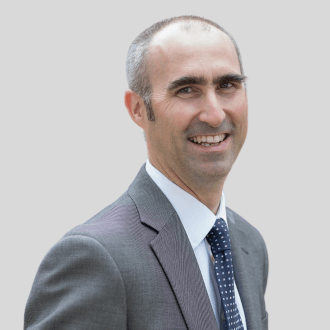
In 2021, CatSci celebrated our ten year anniversary. It was a momentous occasion for us; the last ten years has seen an astonishing growth as we’ve consistently worked hard and with a dedication to medicines development. We celebrated our anniversary with a three day virtual symposium that brought the chemistry community together from across the globe. Hosted on LabLinks, the symposium featured a multitude of talks from world-leading industry experts looking at the future of drug development. We were incredibly proud to have such an excellent host of speakers, we were thrilled to be joined by Dr Martin Eastgate of Bristol Myers Squibb, Nessa Carson of Syngenta, Dr Johnathan Matlock of Argonaute RNA Limited, Dr Phillip Inglesby of AstraZeneca, Dr Alice Dunbabin of CatSci, Dr Changquan Calvin Sun of the University of Minnesota, Silas Adekunle of Reach Industries, Dr Dave Parry of Deep Matter, Dr Georg Wuitschik of F. Hoffmann-La Roche Ltd, Dr Theodore Martinot of FogPharma, Dr Megan Shaw of Merck and Dr Michael Parmentier of Novartis. The presentations spanned from biocatalysis, AI and green chemistry, to high-throughput experimentation, oligonucleotides and laboratory robotics.
We’re sure we were not the only ones who left the event feeling inspired and excited about what lies ahead for the pharmaceutical industry; if the past ten years are anything to go by, the future is limitless, and we are on the cusp of further world-changing developments. It’s an exciting field to be part of, and we are proud of CatSci’s role in helping this become a reality.
CatSci is made up of talented, dedicated and passionate people who all share the vision of accelerating medicines development. This commitment starts at the top and runs all the way through. At the head of the team is Dr Ross Burn, our Chief Executive Officer (CEO), along with Dr Simon Tyler, our Chief Operating Officer (COO), Dr Alan Steven, our Senior Principal Scientist, Dr Robert Dennehy, the Director of Crystallisation and Solid State, Dr Nigel Richardson, Director of Analytical Technology and New Modalities, and Duncan Thompson, our Analytical Team Leader.
Birthdays are a time for reflection, as well as looking ahead to what the future might hold; it’s an exciting time for sure! We spoke to some of the CatSci leaders about the key advancements of drug development in the past 10 years, and what they foresee as the most exciting innovations that will take the industry by storm over the next decade.
Read their responses below…
Dr Ross Burn – CEO

“I am looking forward to the next decade of medicine development, there is sure to be significant advancements in precision medicine and new therapies for patients in need. The continuous improvement into the understanding of human disease will unlock new druggable targets with novel discovery of putative drugs using small molecule, biologics and new modalities platforms. I am particularly excited about the benefit for patients in the drug modality class of oligonucleotides and PROTACs. CatSci will be investing in enhancing our capabilities as an innovation partner to assist in bringing these molecules to become efficacious medicines.” – Dr Ross Burn
Dr Simon Tyler – COO

“It’s always nice to look back on what has been achieved, but I prefer to look forward to the possibilities – it’s much more exciting! The future of medicines development is entering a golden period with both current and new therapeutic modalities presenting real opportunities for healthcare innovation. Further advances in small molecule drugs will ensure that they remain a critical weapon in the fight against disease for many years to come (despite some claims to the contrary). We will start to see the real impact of AI, machine learning, quantum computing and other tools emanating from the digital transformation that is defining the fifth industrial revolution about to sweep the world. Alongside the deeper understanding of data science and its rigorous exploitation, this will expedite much-needed new and improved treatments. Playing our part in getting those to patients in need will continue to be the singular mission for CatSci for the next decade – as it has been for the last.” – Dr Simon Tyler
Dr Alan Steven – Senior Principal Scientist

“The next ten years are likely to see a monumental change in drug substance development and manufacturing practices as the pharmaceutical industry tries to address patient needs whilst making its own contribution to addressing the climate emergency. The explosion in metallaphotoredox chemistry in academic circles is likely to transition to the manufacturing environment, fuelled by the need to find efficient means of forging sp2-sp3 bonds. This will sustain the trend of using reactor technologies that can be designed around the chemistry, rather than the other way around. There is likely to be further embracing of the trend for agile supply using continuous processing to avoid capital immobilisation, and flex market demand whilst improving product quality. The need to reduce the environmental footprint of processing will see continued pressure on the choice of single use ligands used to chaperone metal catalysts, and the continued utilisation of sustainable reaction media. Hopefully, it will be increasingly possible to apply orthogonal techniques to reaction monitoring, making it easier to build the understanding that underpins the robust development of any process. The emergence of new therapeutic modalities and medium-sized molecules will challenge the analytical and measurement science communities to develop new ways of characterising these molecules. Crystallisation science will see improvements in inline analytics to allow the accurate measurement of impurities and crystal form, the coupling of computational fluid dynamics with predictive multidimensional population balance models, and better ways of predicting crystal shape and structure, solubility and impurity rejection. Progression in regulatory science will hopefully enable blurring of the boundaries between drug substance and drug product, allowing more robust processing of both. For all of the domain areas that make up a pharmaceutical development organisation, high quality data will continue to be a highly prized currency, and the ability to transform it into information, and thence process and product understanding will be increasingly enabled by the additions of data scientists and architects to the workforce.”- Dr Alan Steven
Dr Robert Dennehy – Director of Crystallisation and Solid State

“Much of the innovation over the last 10 years in particle formation and measurement has been incremental. Increasingly, polymorphs and hydrates are seen as risks to be understood rather than problems to panic over. Control of solid state and crystallisation process design have become systematised with groups of specialists established in most large and medium-size pharma companies. Equipment manufacturers have responded by creating bespoke platforms for experimentation and measurement. Over the next 10 years, my prediction is that those technologies that solve real problems, that offer breadth of application and speed products to market will be the ones adopted. I am excited by the potential of computational methods using informatics approaches, crystal structure prediction and habit prediction to really streamline early development. I anticipate that we will see a lot more structure determination via electron diffraction. I am hoping that the innovations that led to the systematisation of particle formation will be mirrored in formulation process development, which still appears largely empirical.” – Dr Robert Dennehy
Dr Nigel Richardson – Director of Analytical Technology and New Modalities

“In the last year, nothing illustrates the importance and impact of analytical chemistry more than the advances made in the analysis of DNA and RNA. The majority of the world’s population is now familiar with PCR and immunoassay tests for COVID-19. Rapid DNA sequencing allows variants to be identified and tracked. The mRNA vaccines developed in response to the pandemic have required the development of new analytical chemistry procedures to determine quality. The approval of Inclisiran, a first-in-class cholesterol-lowering, small interfering RNA has required innovation in the field of analytical chemistry. At CatSci, we are proud to continue this innovation journey by developing novel methods for determining the quality of therapeutic oligonucleotides.” – Dr Nigel Richardson
Duncan Thompson – Analytical Team Leader

“The last decade has seen an increased use of Process Analytical Technologies (PAT) to enhance process development, understanding and control. PAT has been critical to process modelling and quality, continuous processing and control strategies. The hunger for process measurement data will only increase in the future with the explosion of AI/ML capabilities and data sciences. This will deliver smart automated process optimisation and a step change in data-based decision making, which will impact quality and speed to market for new medicines.” – Duncan Thompson